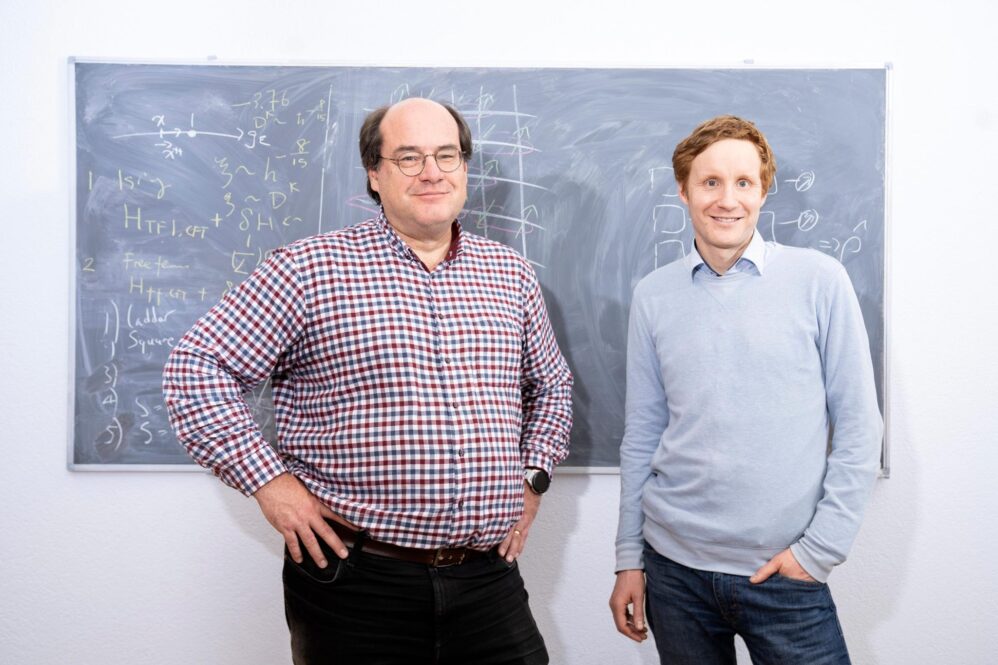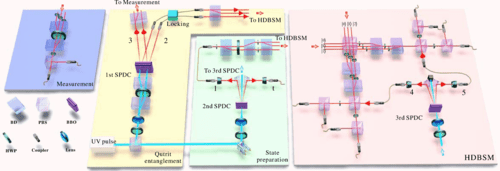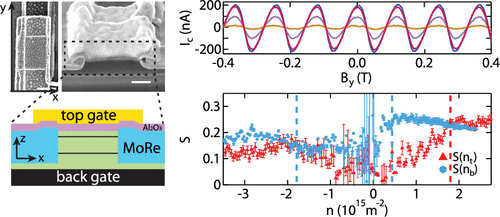The recent development of a hybrid digital-analog quantum simulator marks a significant advancement in quantum computing technology. The system, developed through collaboration between Google and researchers including Andreas Läuchli and Andreas Elben from PSI in Switzerland, combines the precision of digital quantum computing with the natural modeling capabilities of analog simulation.
At the heart of this innovation is Google’s quantum processor featuring 69 superconducting qubits. Unlike traditional digital quantum computers that rely solely on universal quantum gates, this hybrid approach allows for both digital and analog operations. The digital component enables precise control over initial conditions, while the analog aspect naturally simulates physical interactions and dynamics.
This dual functionality is particularly powerful when studying complex physical phenomena. For example, when investigating heat propagation in solids, the digital mode can precisely set initial conditions (like introducing heat at specific points), while the analog mode then naturally simulates how that heat spreads throughout the system. Andreas Elben likens this to watching milk disperse in coffee, where the digital component controls the initial placement of milk drops, and the analog system models the natural mixing process.
The versatility of this quantum simulator extends far beyond simple thermalization studies. The system shows promise for investigating various physical phenomena, particularly in the field of magnetism. One interesting application involves studying frustrated magnetism by arranging qubits in different geometric patterns, which could lead to advances in magnetic computer memory with higher density and faster processing speeds.
The implications of this technology reach across multiple scientific domains. In materials science, it could accelerate the development of high-temperature superconductors and more effective medicines. The system might even help resolve fundamental questions in astrophysics, such as the information paradox related to black holes.
What sets this quantum simulator apart is its universal applicability. Traditional analog quantum simulators are typically designed for specific physical problems, but this hybrid approach creates a more versatile platform capable of addressing a wide range of physics questions. The rectangular arrangement of qubits on Google’s chip allows for various experimental configurations, enabling researchers to explore different physical scenarios and phenomena.
The development represents a crucial step toward realizing Richard Feynman’s 1982 vision of using quantum systems to simulate quantum physics. While classical computers struggle with modeling complex quantum interactions, this hybrid approach leverages quantum mechanics itself to perform these simulations more naturally and efficiently.
Looking ahead, the technology continues to evolve at institutions like PSI’s Quantum Computing Hub, where researchers are exploring various platforms including trapped ions, superconducting qubits, and Rydberg atoms. These developments are not just theoretical achievements but practical tools that can support experiments at major research facilities.
The work demonstrates the growing maturity of quantum simulation technology and its potential to revolutionize our understanding of complex physical systems. By bridging the gap between digital precision and analog naturality, this hybrid approach opens new possibilities for quantum research and applications across multiple scientific disciplines.
This breakthrough stems from international collaboration, bringing together researchers from Google and universities across five countries. The publication of their findings in Nature underscores the significance of this advancement in the field of quantum computing and simulation.
Reference: “Thermalization and criticality on an analogue–digital quantum simulator” by T. I. Andersen, N. Astrakhantsev, A. H. Karamlou, J. Berndtsson, J. Motruk, A. Szasz, J. A. Gross, A. Schuckert, T. Westerhout, Y. Zhang, E. Forati, D. Rossi, B. Kobrin, A. Di Paolo, A. R. Klots, I. Drozdov, V. Kurilovich, A. Petukhov, L. B. Ioffe, A. Elben, A. Rath, V. Vitale, B. Vermersch, R. Acharya, L. A. Beni, K. Anderson, M. Ansmann, F. Arute, K. Arya, A. Asfaw, J. Atalaya, B. Ballard, J. C. Bardin, A. Bengtsson, A. Bilmes, G. Bortoli, A. Bourassa, J. Bovaird, L. Brill, M. Broughton, D. A. Browne, B. Buchea, B. B. Buckley, D. A. Buell, T. Burger, B. Burkett, N. Bushnell, A. Cabrera, J. Campero, H.-S. Chang, Z. Chen, B. Chiaro, J. Claes, A. Y. Cleland, J. Cogan, R. Collins, P. Conner, W. Courtney, A. L. Crook, S. Das, D. M. Debroy, L. De Lorenzo, A. Del Toro Barba, S. Demura, P. Donohoe, A. Dunsworth, C. Earle, A. Eickbusch, A. M. Elbag, M. Elzouka, C. Erickson, L. Faoro, R. Fatemi, V. S. Ferreira, L. Flores Burgos, A. G. Fowler, B. Foxen, S. Ganjam, R. Gasca, W. Giang, C. Gidney, D. Gilboa, M. Giustina, R. Gosula, A. Grajales Dau, D. Graumann, A. Greene, S. Habegger, M. C. Hamilton, M. Hansen, M. P. Harrigan, S. D. Harrington, S. Heslin, P. Heu, G. Hill, M. R. Hoffmann, H.-Y. Huang, T. Huang, A. Huff, W. J. Huggins, S. V. Isakov, E. Jeffrey, Z. Jiang, C. Jones, S. Jordan, C. Joshi, P. Juhas, D. Kafri, H. Kang, K. Kechedzhi, T. Khaire, T. Khattar, M. Khezri, M. Kieferová, S. Kim, A. Kitaev, P. Klimov, A. N. Korotkov, F. Kostritsa, J. M. Kreikebaum, D. Landhuis, B. W. Langley, P. Laptev, K.-M. Lau, L. Le Guevel, J. Ledford, J. Lee, K. W. Lee, Y. D. Lensky, B. J. Lester, W. Y. Li, A. T. Lill, W. Liu, W. P. Livingston, A. Locharla, D. Lundahl, A. Lunt, S. Madhuk, A. Maloney, S. Mandrà, L. S. Martin, O. Martin, S. Martin, C. Maxfield, J. R. McClean, M. McEwen, S. Meeks, K. C. Miao, A. Mieszala, S. Molina, S. Montazeri, A. Morvan, R. Movassagh, C. Neill, A. Nersisyan, M. Newman, A. Nguyen, M. Nguyen, C.-H. Ni, M. Y. Niu, W. D. Oliver, K. Ottosson, A. Pizzuto, R. Potter, O. Pritchard, L. P. Pryadko, C. Quintana, M. J. Reagor, D. M. Rhodes, G. Roberts, C. Rocque, E. Rosenberg, N. C. Rubin, N. Saei, K. Sankaragomathi, K. J. Satzinger, H. F. Schurkus, C. Schuster, M. J. Shearn, A. Shorter, N. Shutty, V. Shvarts, V. Sivak, J. Skruzny, S. Small, W. Clarke Smith, S. Springer, G. Sterling, J. Suchard, M. Szalay, A. Sztein, D. Thor, A. Torres, M. M. Torunbalci, A. Vaishnav, S. Vdovichev, B. Villalonga, C. Vollgraff Heidweiller, S. Waltman, S. X. Wang, T. White, K. Wong, B. W. K. Woo, C. Xing, Z. Jamie Yao, P. Yeh, B. Ying, J. Yoo, N. Yosri, G. Young, A. Zalcman, N. Zhu, N. Zobrist, H. Neven, R. Babbush, S. Boixo, J. Hilton, E. Lucero, A. Megrant, J. Kelly, Y. Chen, V. Smelyanskiy, G. Vidal, P. Roushan, A. M. Läuchli, D. A. Abanin and X. Mi, 5 February 2025, Nature. DOI: 10.1038/s41586-024-08460-3




